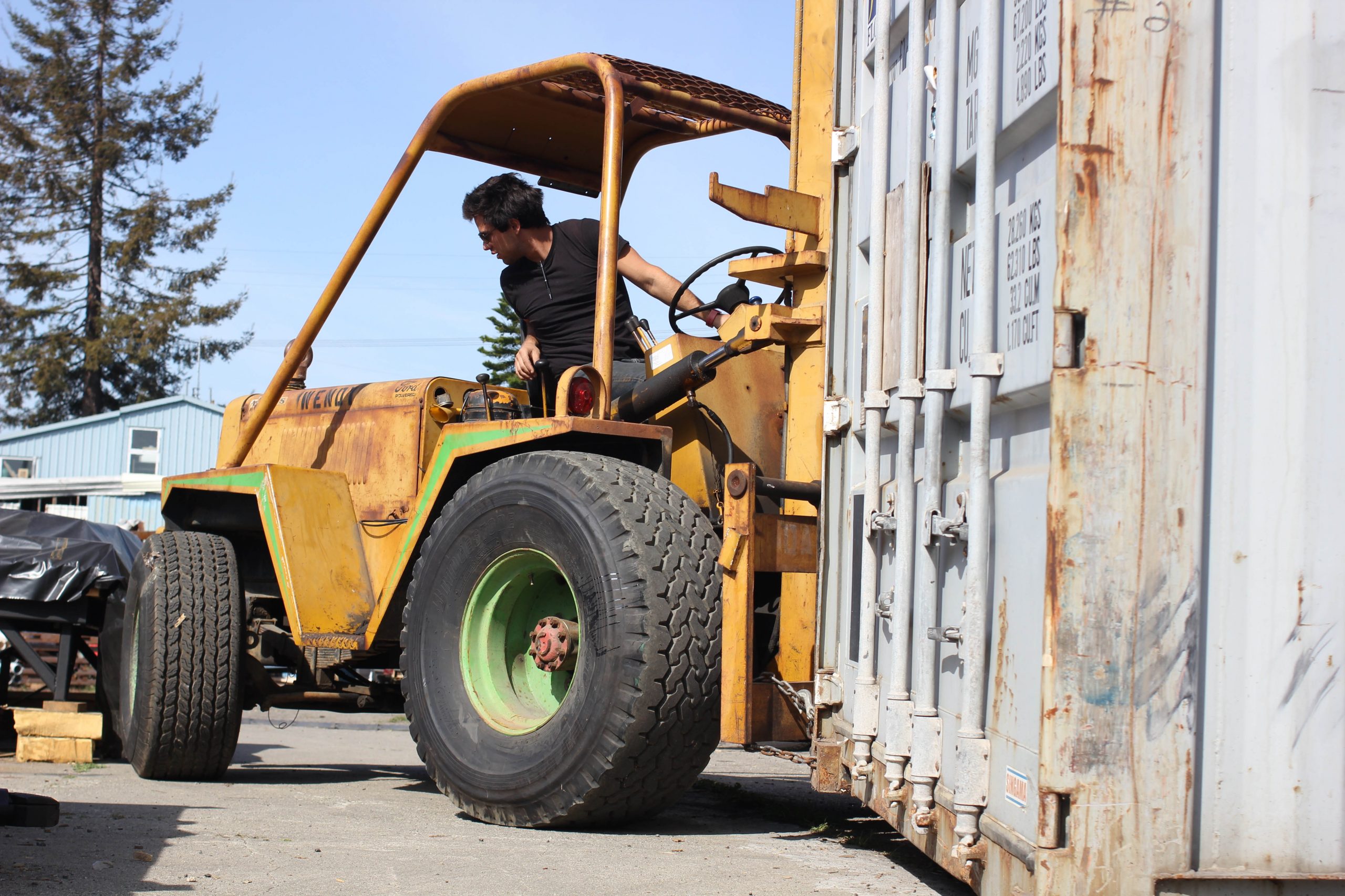Owners of a controversial collection of shipping container homes removed them from their West Oakland lot after city building inspectors threatened fines.
The do-it-yourself-minded Boxouse community first occupied the lot, in a neighborhood with a mix of houses and industrial buildings, in August.
We wrote about it in our summer 2014 print edition, which explored potential solutions to San Francisco’s housing affordability crisis. Housing is particularly expensive to build in the city because land is at a premium — against that backdrop, the idea of container homes has permeated recent policy discussions about how to inexpensively house the homeless population.
Artist and entrepreneur Luke Iseman’s tiny, unconventional dwelling cost him about $12,000, including furniture and other amenities. He has invented gadgets for farmers and gardeners, to help increase crop yields and monitor growing conditions, and he started a pedicab company with friends using homemade rigs. Those experiences taught him how to get an idea off the ground. “You build something, it breaks, you fix it, and you rapidly iterate,” he said.
Without asking the city’s permission, Iseman, Boxouse co-founder Heather Stewart and others cut down chest-high overgrowth, treated the soil, set up their own electrical wiring and plumbing and began retrofitting shipping containers there into living spaces.
But neighbors complained, and in February building inspectors dealt the crew an ultimatum: Bring everything up to code, or get rid of it.
Inspectors said many of the group’s arrangements were illegal, even though the property was zoned for residential use. For instance, neighbors said Boxouse members were welding and drilling at night, which would be allowed only on land zoned for manufacturing uses, said Rachel Flynn, director of Oakland’s Planning and Building Department. Vehicles stored illegally on the site would have to go, as would the composting toilets.
“It’s nice that people have original ideas and they want to look at alternatives for housing people,” Flynn said. “And yet, you need to know that there are systems in place and there are reasons for those systems. If they were to settle down and establish their own place, they would want a future neighbor to respect that system as well.”
Iseman said after the inspection at 2836 Union Street that it might have cost $200,000 to $300,000 to bring the property and containers into compliance with building and health codes.
Stewart declined to say where the group took the container homes. The new space “will be organized, beautiful, and largely inside, hidden from the prying eyes of nosey neighbors and nettlesome bureaucrats,” she wrote in her blog.








